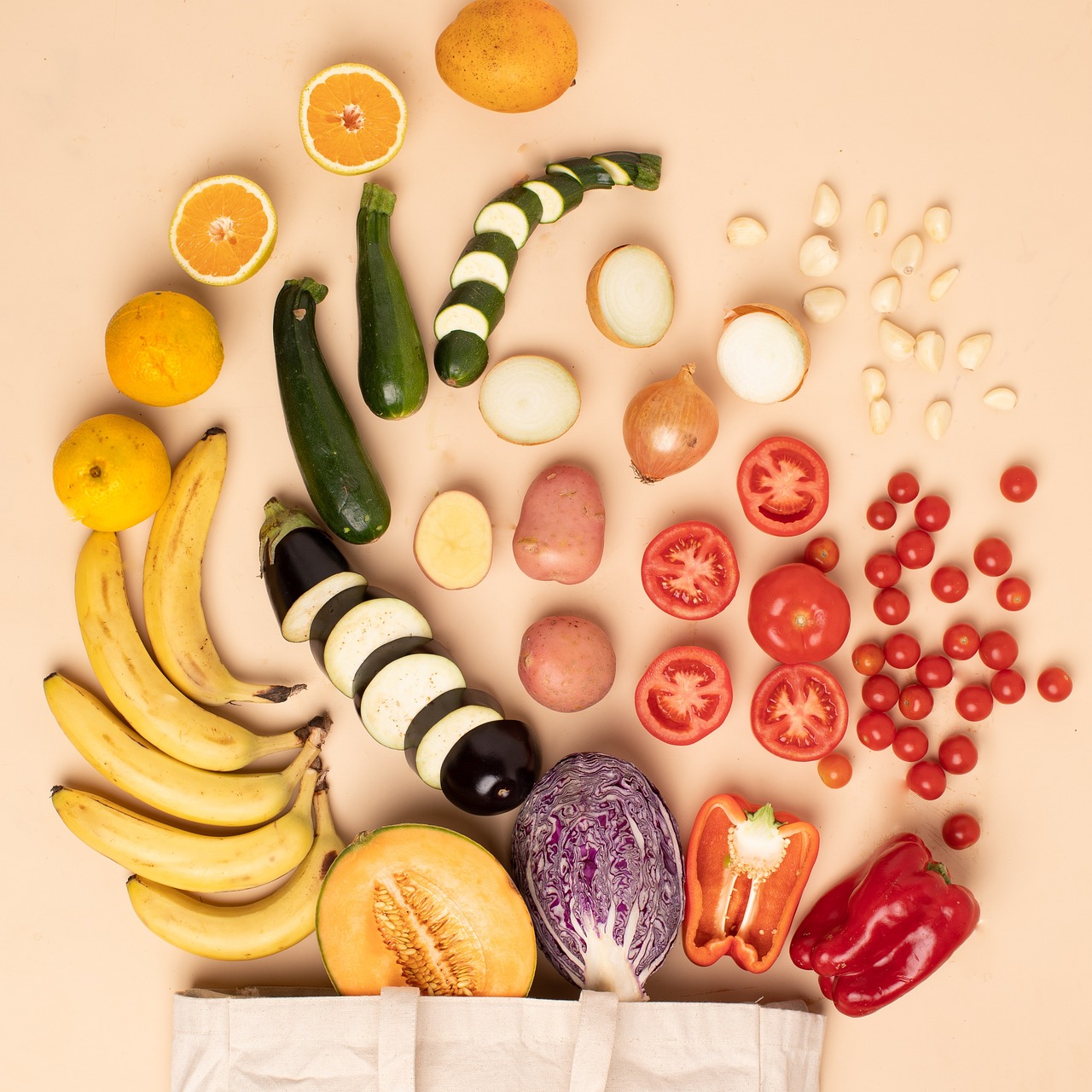Have you heard the Irish myth that says at the end of every rainbow lies a pot of gold? Although there may be no truth to tales of little green leprechauns, there may still be value in chasing rainbows, at least when it comes to what you eat. According to recent studies, a diet rich in colorful fruits and vegetables may lead you to the treasure of good health.
The Wheel to Well-Being
For years American diets have been guided mostly by recommendations from the food pyramid. This past fall, researchers at the UCLA Center for Human Nutrition unveiled the Color Wheel of Health. This new approach to nutrition emphasizes the importance of eating color-rich fruits and vegetables. The color wheel is based on emerging research that links the chemicals in colorful fruits and vegetables to decreased risks of certain diseases.
The wheel is divided into seven groups including:
Red –– tomatoes, watermelons, pink grapefruit.
Red-Purple — strawberries, blueberries, cranberries, grapes.
Orange — carrots, pumpkin, winter squash, apricots, cantaloupe.
Orange-yellow — citrus fruits, peaches, papayas, pineapple, nectarines.
Green — broccoli, Brussels sprouts, cabbage, kale, cauliflower, watercress.
Yellow-Green — collard greens, spinach, mustard and turnip greens, avocado, green peas, green beans, honeydew melon.
White-Green — garlic, onions, shallots, leeks, chives.
Powerful Pigments
Scientists believe that the pigment of fruits and vegetables contains health-promoting compounds called phytochemicals that inhibit disease. For example, lycopene, the chemical that colors tomatoes, acts as an antioxidant that may lower rates of heart disease and prostate cancer. The richer, more intensely colored a food is, the more disease-fighting properties it may have. Pale vegetables do contain pigments that protect against disease, but color still matters. While white onions have been shown to boost the immune system, lower cholesterol and protect against heart disease, red and yellow onions have more nutrients.
What Hue Can Do
The scientific evidence behind the Color Wheel of Health continues to grow. Some of the most promising research comes from studies of blueberries. A study by Tufts University found that out of 40 fruits and vegetables analyzed, blueberries have the highest antioxidant content. Researchers believe that anthocyanin, the substance that colors blueberries, may be a powerful antioxidant that fights cancer.
Tufts researchers also found that aging rats that were given blueberry extracts performed better at coordination and memory tests. Now the link between blueberries and improved memory is being studied in older people.
Other potent produce includes:
Raspberries and Strawberries
Researchers from Indiana University and Ohio State University found that raspberries and strawberries inhibit the growth of colon and esophageal cancer cells in rats exposed to tobacco smoke carcinogens.
Carrots, Squash and Sweet Potato
The Nurses’ Health Study found that women who ate the most of these vegetables have the lowest risk of breast cancer. These vegetables are full of phytochemicals called carotenoids.
Spinach and Broccoli
These vegetables contain high amounts of vitamin K. The Framington Heart Study found that elderly men and women with high vitamin K intakes had significantly fewer hip fractures. Spinach, which contains lutein, is also believed to fight the eye disease macular degeneration.
The Author:
Courtesy of ARA Content
